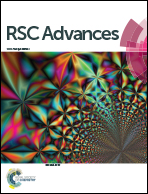Architectural chemistry of polyoxometalate-based coordination frameworks constructed from flexible N-donor ligands
Abstract
Polyoxometalate-based coordination frameworks (POMCFs) extend the families of material chemistry and structural chemistry due to their diverse properties and fascinating architectures. In the architectural field of POMCFs, the choice of organic ligand usually plays a key role in the self-assembling process. To date, plenty of organic ligands, such as carboxylates and N-donor ligands, have been designed and utilized in the construction of porous, multinuclear and polythreaded architectures. As far as N-donor ligands are concerned, their flexible and rigid nature can show important influences on the formation of various architectures. This perspective highlights the recent developments in polythreaded/penetrating, multinuclear, helical architectural chemistry of POMCFs constructed from flexible N-donor ligands, including bis-imidazole, bis-triazole, bis-pyridine, bi-mercaptotetrazole, bi-pyridyl-bis-amide and bis-pyridyltetrazole ligands. Here, we will describe the influence of different space lengths and coordination groups on flexible N-donor ligands, as well as the influence of pH and polyoxometalates on the architectural structures of POMCFs, which may offer some possible synthetic strategies for constructing functional POMCFs with novel architectures.


 Please wait while we load your content...
Please wait while we load your content...